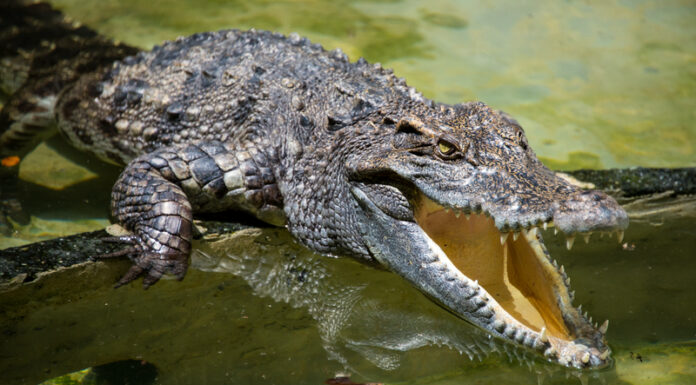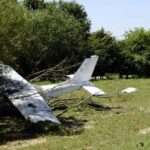A 10-year-old Indonesian boy was killed by a crocodile while playing with friends on a makeshift canoe in a river in Riau province, authorities confirmed Wednesday, March 26.
When the deadly reptile attacked, Fikri Qurniawansyah was riding on a blue barrel that had been converted into a small canoe with several friends. According to witness accounts, the boy had placed his hand in the water moments before the predator struck.
Friends who were with Fikri at the time of the attack reported that the crocodile chomped down on the boy’s arm, causing him to scream in pain. The massive reptile then pulled him off the makeshift vessel despite desperate attempts by his companions to save him.
The friends managed to hold onto Fikri’s other arm momentarily, struggling to wrestle him back to safety, but the predator’s grip proved too powerful. The crocodile escaped with the boy in its jaws after the vessel overturned.
Following the attack, Fikri’s companions escaped from the water and returned to their village to alert adults and authorities. Rescue crews immediately launched a search operation for the missing child.
During the search, the team located and killed a crocodile they suspected was responsible for the attack. However, when they examined the reptile’s stomach contents, they found no trace of the boy.
Fikri’s body was ultimately discovered on Tuesday when a local farmer, identified as 37-year-old Muhammad Nurdin, spotted the corpse floating face-down in the river. The terrified villager promptly notified the police, who dispatched a boat to recover the remains.
Medical examination of the body revealed multiple bruises consistent with what experts describe as a “death roll” — a violent spinning technique crocodiles use to subdue their prey. After confirmation of identity, authorities released Fikri’s body to his family for burial.
In the aftermath of the incident, the police chief warned local residents about the dangers lurking in the waterways. “If there are any signs of crocodile sightings, please report them to the authorities immediately so that necessary actions can be taken,” the police chief emphasized.
The Indonesian archipelago is home to 14 different species of crocodiles, including a substantial population of particularly large and aggressive estuarine crocodiles that thrive in the local climate. These fearsome reptiles can grow to enormous sizes and are known for their territorial behavior.
Wildlife experts point to several factors contributing to the rising number of human-crocodile conflicts in the area. Extensive overfishing has dramatically reduced the natural food supplies for these predators, forcing them to search for alternative sources of nourishment.
Simultaneously, the rapid development of coastal areas into agricultural land has encroached upon traditional crocodile habitats, pushing the animals farther inland and closer to human settlements. The situation is further exacerbated by widespread tin mining operations in the region, which have displaced local communities into areas more frequently inhabited by crocodiles.
Environmental researchers have observed that habitat loss from overfishing and agricultural expansion has forced crocodiles to move closer to human settlements. These human activities diminish the reptiles’ natural food sources while shrinking their available habitat.
Conservation authorities are now working with local communities to implement safety measures and educational programs to reduce the risk of future attacks. These initiatives include installing warning signs at known crocodile hotspots, establishing designated safe swimming areas, and training community members in crocodile safety protocols.
The incident involving Fikri is part of an alarming pattern observed by wildlife officials across Indonesia. Similar attacks have been documented in other provinces, highlighting the broader challenges of human-wildlife conflict in a nation experiencing rapid development alongside rich biodiversity.
This incident occurred amid growing concerns about crocodile management throughout Southeast Asia, where balancing conservation efforts with public safety has become increasingly challenging. Wildlife protection agencies continue to advocate for solutions that protect both endangered crocodile populations and the human communities that share their environment.








